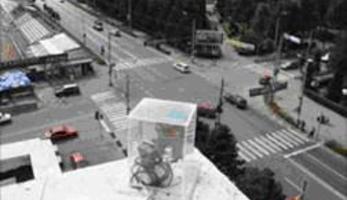Introducing bus priority and other improvements
Summary
Faced with increasing numbers of private cars on the city’s roads, the measure was implemented in order to improve the efficiency and attractiveness of the public transport fleet.
Implementing sustainable mobility
At the time of measure implementation, the purchasing of new buses and the promotion of alternative fuels by converting the new vehicles to run on liquefied petroleum gas (LPG) had gone some way to addressing the city’s rising levels of air pollution. However, more needed to be done to reverse the negative trends in Suceava’s transportation system.
The objectives of this measure were therefore to make public transport more attractive and safer; to give buses priority over other traffic on the city’s roads, especially during peak periods; to introduce global positioning systems (GPS) and video cameras to monitor traffic flow; and to promote and install park and ride and park and walk facilities.
Progress
Activities undertaken in order to fulfil these objectives included:
- installing new traffic lights with a green wave scheme to improve traffic flow at eight junctions;
- modernising bus stops with shelters and information displays;
- widening the roads with extra lanes (separate routes) and improved signaling at congested intersections;
- creating legal provisions for implementing public transport priority; and
- providing passengers with accurate travel information via modern technological solutions (e.g. electronic panels on board buses);
- introducing electronic ticketing through a demonstration bus;
- monitoring traffic to facilitate decision making and enhance security via three closed-circuit television cameras, three traffic sensors and GPS on board buses.
Outcomes
- There was a good level of acceptance for the implemented measures.
- The quality of public transport services improved in terms of physical comfort, personal security, journey times, the accessibility of public transport vehicles at bus stops, drivers’ attitude, and the provision of real-time information.
- Awareness was raised of the introduction of cleaner public transport vehicles and supporting measures: 82 percent of respondents were aware of the cleaner vehicles and alternative fuels, providing a good starting point for future traffic management innovations.










